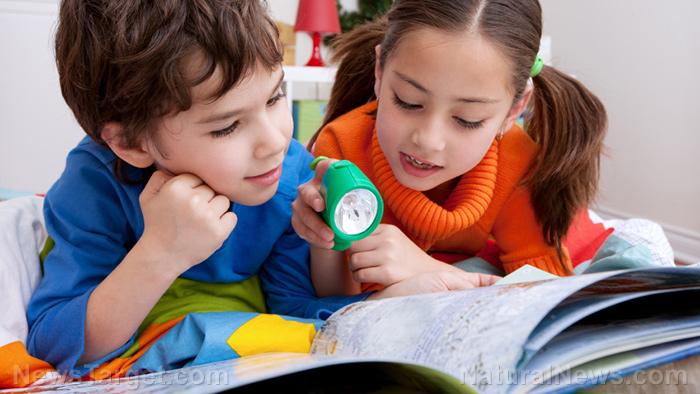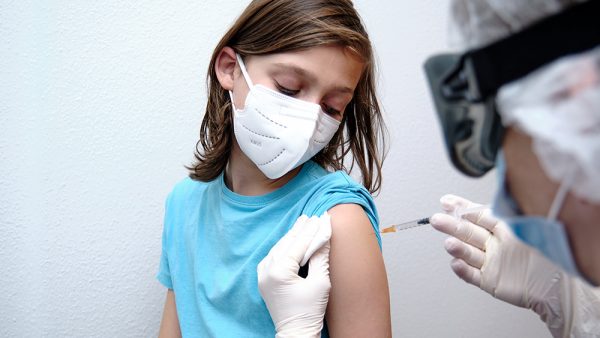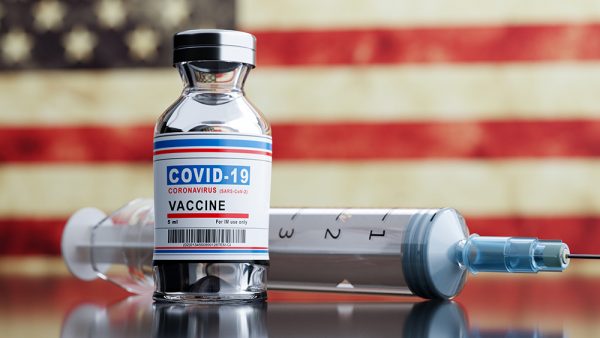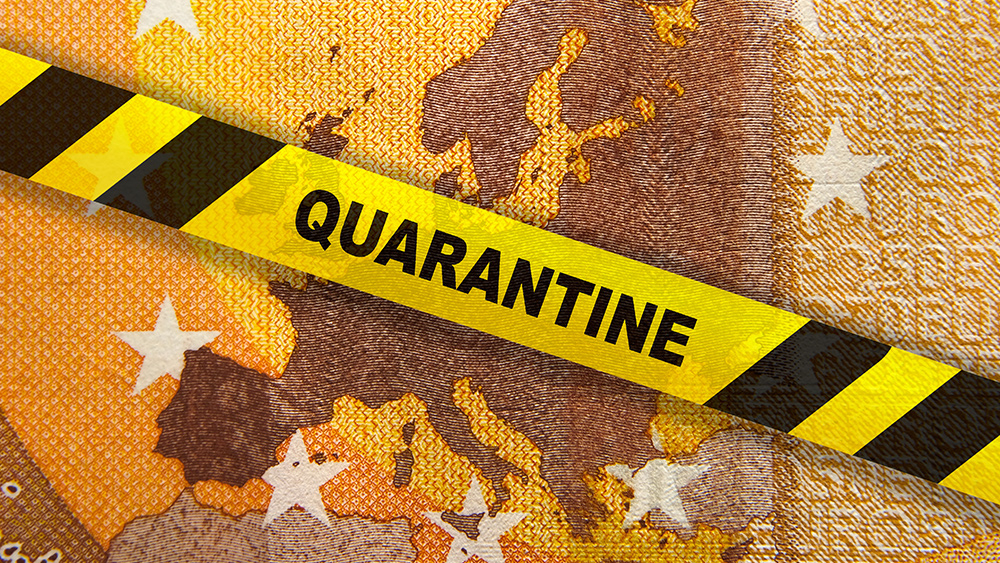
‘Children are being taught to hate in the name of diversity‘
(Article republished from LeoHohmann.com) As I warned back on May 7, They are coming for your kids: Globalists launch all-out assault on children. The main target of the Covid scare and resulting global Great Reset is the children. It’s no coincidence that Anthony Fauci and the global pharma cabal are now recklessly promoting the experimental gene-therapy injections for children ages 5 and up. One of the ways you do this is to scare children and divide them off from their parents. Also see: 120 Pop-Up Vaccination Sites to Target Kids Across New York State The children’s propaganda machine works through social media, schools, video games, books, magazines, TV and film. Today we take a look at just one aspect, books. Deborah DeGroff is an expert on children’s books and what parents need to know about the books their kids are reading or being assigned to read from the school library. Below is a condensed version of an article DeGroff posted Sept. 16 at her website, whatsinchildrensbooks.com about the many children’s books published of late about viral pandemics. I encourage everyone to check out her website because it includes many excellent reviews, reader-friendly charts and articles about children’s books, some of which will shock your conscience. By Deborah DeGroff whatsinsidechildrensbooks.com I have been curious about children’s books that address diseases, pandemics, and more specifically, COVID-19. I found so many books on the subject that I decided to chart only the selections found on the Accelerated Reader website. The 22 books on my first chart are for lower grades (K-3) and middle grades (4-8) and range from a 2.7 to a 6.4 reading level. All but two of these books were published in 2021. Each book consists of 24, 32, 48, or 49 pages. The Word Count range is from 263 to 5,268. To put this in perspective—Margret Rey’s Curious George Plays Baseball has 299 words and Dr. Seuss’s Hop on Pop has 384. Mary Pope Osborne’s Magic Tree House Book, The Knight at Dawn, has 5,340 words. With such a limited number of words – seven of the books charted have fewer words than Hop on Pop – how much information can be covered? Some or all the following would be mentioned: social distancing, flattening the curve, mask wearing, washing hands, how viruses spread, and perhaps some facts about previous epidemics or pandemics. If your children read these books or listen as someone reads the books to them, what will be their take away? Is the information factual and/or does it instill fear? How much immersion in this is necessary and how much is too much? Who should be determining this – the state or the parent? Accelerated Reader is used in many schools, both private and public. Children receive points for reaching a certain percentage on the online multiple-choice tests. Children assigned to do projects or reports on COVID-19 would most likely use these sources since they could also take the online test and earn points simultaneously. The inclusion of titles on this chart does not mean that these books are good or bad, correct or incorrect. They are simply books found on this subject on Accelerated Reader which anyone can easily access. Ask yourself some questions as you are the one who knows your children best. Would it be important for your children to read one or many of these, or would it be better if they read books that had nothing to do with this? Do your children need to be focused on this issue, or would time be better spent learning how to read, write, and do their arithmetic? Would concentrating on learning their basic skills or reading different books help alleviate the constant rhetoric that is possibly causing their fear or anxiety? Obviously, there is a great deal of fear created because Social Emotional Learning is now being presented as the necessary cure to alleviate this fear. This has spawned the creation of even more books for children. As Rahm Emanuel once said, “You never let a serious crisis go to waste.” The children also sense this fear from the adults in their lives. After all, the adults are terrified to have any thoughts that are not in alignment with the fact checkers. The children also fear that they may kill Grandma or Grandpa if they don’t wear their masks properly or wash their hands for the proper number of seconds. Adding fuel to the fire, children are being taught to hate in the name of diversity. Perhaps it is about skin color, whether boys can become girls, whether someone does or does not wear a mask, or whether those 12 or older have been vaccinated the mandated number of times. The child has learned early that there is only one viewpoint allowed. If their parents are not in agreement with the position the child is learning in school, the child becomes more conflicted. Learning that everyone has to have the same thoughts and feelings and act accordingly hardly fits under the “diversity” umbrella. At what point did we begin accepting that the meaning of diversity is actually sameness? A quick trip to Amazon or YouTube will reveal numerous other books for the very young about this subject. Finn Reeder, Flu Fighter (also on AR), Rona Stole My Fun!: The Four Year Old Vs The Virus, When Virona the Corona Came to Town, Corona Super Kids, My Corona Story, Mighty Matty Conquers Corona, Achoo! The Day Corona came to visit, A Coronavirus Christmas: The Spirit of Christmas Will Always Shine Through, The Corona Monster, Corona Capes, Goodbye Corona, and Ramona Corona are just a few. Attitudes and ideas are not shaped overnight. Understanding that premise, I searched for children’s books about epidemics or pandemics prior to COVID-19. Once again, I am only charting the books I found on the Accelerated Reader website. Almost all the books on the following charts were originally published prior to COVID-19. These books include both fiction and non-fiction books. Were some of these books written at the suggestion of publishers or were they just products of creative minds? I read Albert Marrin’s Very, Very, Very Dreadful: The Influenza Pandemic of 1918. Marrin was a history professor and has written many non-fiction books for young adults. Marrin’s book was published in January of 2018. Marrin’s book is thoroughly researched and includes an extensive list of books and articles for further reading. It was quite timely that Marrin included a section about Dr. Ron Fouchier, a virologist, and his gain-of-function research. The subheading reads: “Engineering Doomsday.” Seldom is a topic as simple and straightforward as we have been led to believe. Marrin broadens the scope of this pandemic for a young adult audience. He probably hopes that the readers will utilize the various sources for further study that he included to come to their own conclusions. His depictions of war are brutally honest. If your child is reading this in school, the teacher could lead the children to conclusions that are not those of your own family. I also read Jim Murphy’s An American Plague: The True and Terrifying Story of the Yellow Fever Epidemic of 1793. Since no one really knew what caused the fever, doctors had different methods of treating patients. One of these methods included ingesting mercury! The actions of political leaders in our newly formed government, blacks caring for white patients, and even the decision as to whether the United States should come to the aid of the French in their own revolution are all subjects addressed in this book. Accelerated Reader includes this book for Upper Grades (9th-12th) and lists it at a 9.0 reading level. Both the publisher’s website and Amazon list this book for children from 10-12 in grades 5 to 7. An American Plague: The True and Terrifying Story of the Yellow Fever Epidemic of 1793 is a 7th grade selection in the Wit and Wisdom in Sync™ Core Text Library. All of the aforementioned subjects listed in this book could be handled differently by teachers leading the discussions. Children today are taught to think very highly of their own feelings and opinions. Discussions often become a free-for-all of these opinions which, eerily, are usually about the same. Facts don’t have to come into play in these discussions. If or when they do, the class is usually persuaded by the emotional arguments. An example of this was Lily & Dunkin’, by Donna Gephart. Tim is in eighth grade and wants to take hormone blockers to delay puberty. This is a basic theme of this book. Poor Tim! His father objects to this, at first. He changed his mind when the therapist asked him if he “would rather have a dead son or a live daughter?” One of the discussion questions reads: “Why is it best that she begin the hormone therapy now?” After the children ages 10 and up read this book, how do you think they will respond? These are some questions a parent should consider about books in general:- If the child is reading the book on his/her own, what is the take-away? Is that take-away formed by factual or emotional persuasion? Is the book objective?
- Are there links or resources included in the book that could be harmful? (One book I found in the juvenile section of a library had links to Kinsey Confidential, San Francisco Sex Information, Advocates for Youth, Go Ask Alice!, Scarleteen, Planned Parenthood, many LGBT resources, and adult books about sexual issues such as stories about transgender females to males. When the children venture to these websites, they discover other links that may well lead them to porn sites. One of the resource links from this book gives quite an education about beastiality.)
- If the book is required, is it being discussed by the teacher? Is the information being slanted to a particular worldview?
- What about climate change or global warming? What about BLM? What about Critical Race Theory? How are Christians portrayed? How are other religions depicted? How was Trump addressed in books for kids? Biden? Obama? Fauci? (Kate Messner’s book, Dr. Fauci: How a Boy from Brooklyn Became America’s Doctor, was released in June of 2021.) Who is God in children’s books? What about social activism? How is America represented? Capitalism? Marxism?
- What are the themes and messages in the books being prominently displayed in the children’s sections of the public libraries? Are these same books found in Christian school libraries?
- Why are high school students being assigned books that are written on such low reading levels?
- Are the children assigned multiple books with the same message? How many does it take to change a worldview?
‘Children are being taught to hate in the name of diversity‘
As I warned back on May 7, They are coming for your kids: Globalists launch all-out assault on children. The main target of the Covid scare and resulting global Great Reset is the children. It’s no coincidence that Anthony Fauci and the global pharma cabal are now recklessly promoting the experimental gene-therapy injections for children ages 5 and up. One of the ways you do this is to scare children and divide them off from their parents. Also see: 120 Pop-Up Vaccination Sites to Target Kids Across New York State The children’s propaganda machine works through social media, schools, video games, books, magazines, TV and film. Today we take a look at just one aspect, books. Deborah DeGroff is an expert on children’s books and what parents need to know about the books their kids are reading or being assigned to read from the school library. Below is a condensed version of an article DeGroff posted Sept. 16 at her website, whatsinchildrensbooks.com about the many children’s books published of late about viral pandemics. I encourage everyone to check out her website because it includes many excellent reviews, reader-friendly charts and articles about children’s books, some of which will shock your conscience. By Deborah DeGroff whatsinsidechildrensbooks.com I have been curious about children’s books that address diseases, pandemics, and more specifically, COVID-19. I found so many books on the subject that I decided to chart only the selections found on the Accelerated Reader website. The 22 books on my first chart are for lower grades (K-3) and middle grades (4-8) and range from a 2.7 to a 6.4 reading level. All but two of these books were published in 2021. Each book consists of 24, 32, 48, or 49 pages. The Word Count range is from 263 to 5,268. To put this in perspective—Margret Rey’s Curious George Plays Baseball has 299 words and Dr. Seuss’s Hop on Pop has 384. Mary Pope Osborne’s Magic Tree House Book, The Knight at Dawn, has 5,340 words. With such a limited number of words – seven of the books charted have fewer words than Hop on Pop – how much information can be covered? Some or all the following would be mentioned: social distancing, flattening the curve, mask wearing, washing hands, how viruses spread, and perhaps some facts about previous epidemics or pandemics. If your children read these books or listen as someone reads the books to them, what will be their take away? Is the information factual and/or does it instill fear? How much immersion in this is necessary and how much is too much? Who should be determining this – the state or the parent? Accelerated Reader is used in many schools, both private and public. Children receive points for reaching a certain percentage on the online multiple-choice tests. Children assigned to do projects or reports on COVID-19 would most likely use these sources since they could also take the online test and earn points simultaneously. The inclusion of titles on this chart does not mean that these books are good or bad, correct or incorrect. They are simply books found on this subject on Accelerated Reader which anyone can easily access. Ask yourself some questions as you are the one who knows your children best. Would it be important for your children to read one or many of these, or would it be better if they read books that had nothing to do with this? Do your children need to be focused on this issue, or would time be better spent learning how to read, write, and do their arithmetic? Would concentrating on learning their basic skills or reading different books help alleviate the constant rhetoric that is possibly causing their fear or anxiety? Obviously, there is a great deal of fear created because Social Emotional Learning is now being presented as the necessary cure to alleviate this fear. This has spawned the creation of even more books for children. As Rahm Emanuel once said, “You never let a serious crisis go to waste.” The children also sense this fear from the adults in their lives. After all, the adults are terrified to have any thoughts that are not in alignment with the fact checkers. The children also fear that they may kill Grandma or Grandpa if they don’t wear their masks properly or wash their hands for the proper number of seconds. Adding fuel to the fire, children are being taught to hate in the name of diversity. Perhaps it is about skin color, whether boys can become girls, whether someone does or does not wear a mask, or whether those 12 or older have been vaccinated the mandated number of times. The child has learned early that there is only one viewpoint allowed. If their parents are not in agreement with the position the child is learning in school, the child becomes more conflicted. Learning that everyone has to have the same thoughts and feelings and act accordingly hardly fits under the “diversity” umbrella. At what point did we begin accepting that the meaning of diversity is actually sameness? A quick trip to Amazon or YouTube will reveal numerous other books for the very young about this subject. Finn Reeder, Flu Fighter (also on AR), Rona Stole My Fun!: The Four Year Old Vs The Virus, When Virona the Corona Came to Town, Corona Super Kids, My Corona Story, Mighty Matty Conquers Corona, Achoo! The Day Corona came to visit, A Coronavirus Christmas: The Spirit of Christmas Will Always Shine Through, The Corona Monster, Corona Capes, Goodbye Corona, and Ramona Corona are just a few. Attitudes and ideas are not shaped overnight. Understanding that premise, I searched for children’s books about epidemics or pandemics prior to COVID-19. Once again, I am only charting the books I found on the Accelerated Reader website. Almost all the books on the following charts were originally published prior to COVID-19. These books include both fiction and non-fiction books. Were some of these books written at the suggestion of publishers or were they just products of creative minds? I read Albert Marrin’s Very, Very, Very Dreadful: The Influenza Pandemic of 1918. Marrin was a history professor and has written many non-fiction books for young adults. Marrin’s book was published in January of 2018. Marrin’s book is thoroughly researched and includes an extensive list of books and articles for further reading. It was quite timely that Marrin included a section about Dr. Ron Fouchier, a virologist, and his gain-of-function research. The subheading reads: “Engineering Doomsday.” Seldom is a topic as simple and straightforward as we have been led to believe. Marrin broadens the scope of this pandemic for a young adult audience. He probably hopes that the readers will utilize the various sources for further study that he included to come to their own conclusions. His depictions of war are brutally honest. If your child is reading this in school, the teacher could lead the children to conclusions that are not those of your own family. I also read Jim Murphy’s An American Plague: The True and Terrifying Story of the Yellow Fever Epidemic of 1793. Since no one really knew what caused the fever, doctors had different methods of treating patients. One of these methods included ingesting mercury! The actions of political leaders in our newly formed government, blacks caring for white patients, and even the decision as to whether the United States should come to the aid of the French in their own revolution are all subjects addressed in this book. Accelerated Reader includes this book for Upper Grades (9th-12th) and lists it at a 9.0 reading level. Both the publisher’s website and Amazon list this book for children from 10-12 in grades 5 to 7. An American Plague: The True and Terrifying Story of the Yellow Fever Epidemic of 1793 is a 7th grade selection in the Wit and Wisdom in Sync™ Core Text Library. All of the aforementioned subjects listed in this book could be handled differently by teachers leading the discussions. Children today are taught to think very highly of their own feelings and opinions. Discussions often become a free-for-all of these opinions which, eerily, are usually about the same. Facts don’t have to come into play in these discussions. If or when they do, the class is usually persuaded by the emotional arguments. An example of this was Lily & Dunkin’, by Donna Gephart. Tim is in eighth grade and wants to take hormone blockers to delay puberty. This is a basic theme of this book. Poor Tim! His father objects to this, at first. He changed his mind when the therapist asked him if he “would rather have a dead son or a live daughter?” One of the discussion questions reads: “Why is it best that she begin the hormone therapy now?” After the children ages 10 and up read this book, how do you think they will respond? These are some questions a parent should consider about books in general:- If the child is reading the book on his/her own, what is the take-away? Is that take-away formed by factual or emotional persuasion? Is the book objective?
- Are there links or resources included in the book that could be harmful? (One book I found in the juvenile section of a library had links to Kinsey Confidential, San Francisco Sex Information, Advocates for Youth, Go Ask Alice!, Scarleteen, Planned Parenthood, many LGBT resources, and adult books about sexual issues such as stories about transgender females to males. When the children venture to these websites, they discover other links that may well lead them to porn sites. One of the resource links from this book gives quite an education about beastiality.)
- If the book is required, is it being discussed by the teacher? Is the information being slanted to a particular worldview?
- What about climate change or global warming? What about BLM? What about Critical Race Theory? How are Christians portrayed? How are other religions depicted? How was Trump addressed in books for kids? Biden? Obama? Fauci? (Kate Messner’s book, Dr. Fauci: How a Boy from Brooklyn Became America’s Doctor, was released in June of 2021.) Who is God in children’s books? What about social activism? How is America represented? Capitalism? Marxism?
- What are the themes and messages in the books being prominently displayed in the children’s sections of the public libraries? Are these same books found in Christian school libraries?
- Why are high school students being assigned books that are written on such low reading levels?
- Are the children assigned multiple books with the same message? How many does it take to change a worldview?
TREASON: American government officials caught editing Wuhan lab journal
By Ethan Huff // Share
Sweden and Denmark ban dangerous COVID-19 vaccines for young people
By Cassie B. // Share
Unvaccinated Kaiser employees put on unpaid leave, may face job termination
By Mary Villareal // Share
German court rules strict COVID curfews in 2020 were illegal
By Mary Villareal // Share
An invisible assault: How everyday heavy metals sabotage brain health
By willowt // Share
Pentagon warns of China's rapidly expanding nuclear arsenal
By kevinhughes // Share
FCC grounds new Chinese drones in sweeping security move
By avagrace // Share
The methylation switch: Scientists identify diet that can turn back the cellular clock
By jacobthomas // Share
Renaissance or Ruin: A wake-up call for cultural revival and self-sufficiency
By kevinhughes // Share
Weight loss in midlife may trigger brain inflammation, study finds
By avagrace // Share











